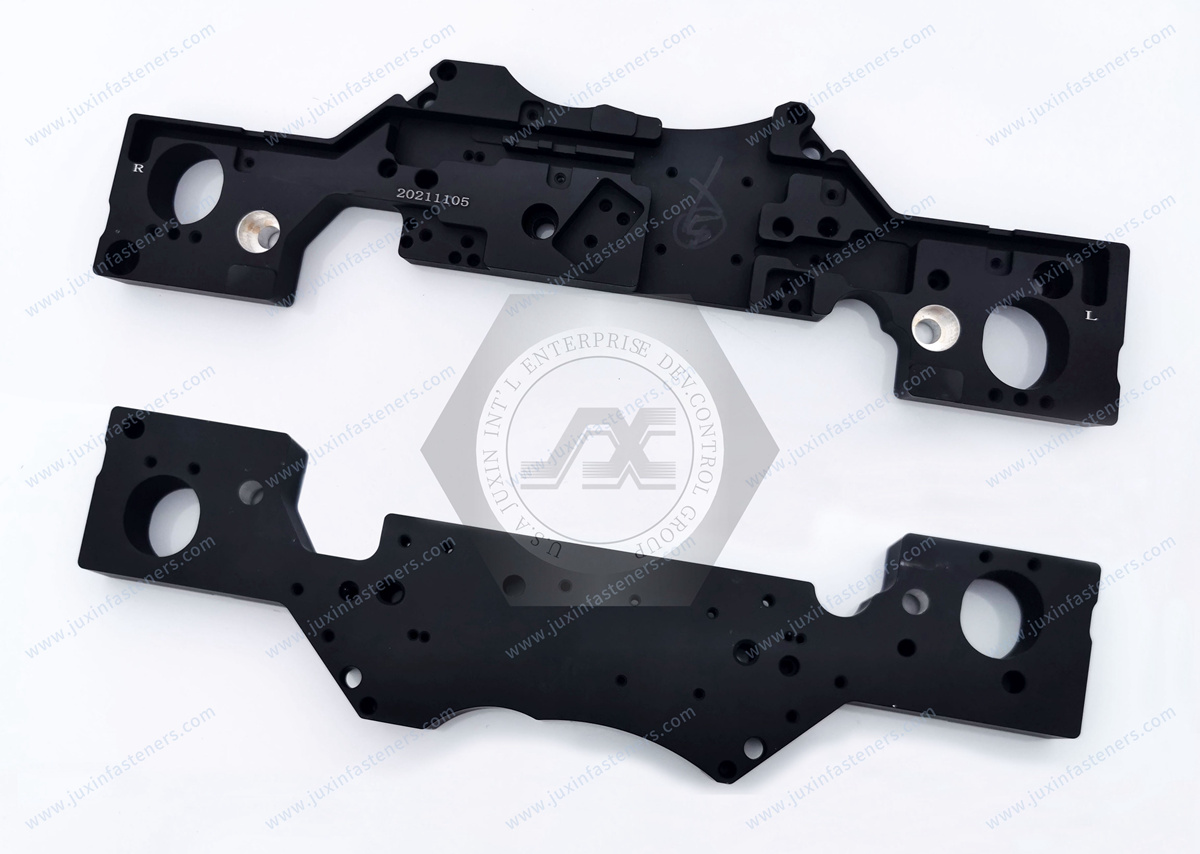Call Us
+86 136 6007 9809
Call Us
+86 136 6007 9809
Note: Material: 6061-T6 aluminum
Color: Natural
Finish: A21 clear coat anodized, No sharp edges or corners, Surface treatment black anodized
Product Specification
Characteristics of aluminum alloys on mechanical design:
Commonly used aluminum alloy models on mechanical design are AL5052, AL6061, AL6063, and AL7075.
Common surface treatment methods for aluminum alloys:
1. black anodizing;
2. natural color anodizing;
3. Sandblasting (120#-140#) + black/native color anodizing
4. Hard anodizing (applied to parts with high requirements for surface wear resistance)
Advantages of aluminum alloy material:
1. better material toughness, high impact resistance, low density but relatively high strength, close to or exceeding high-quality steel;
2. good plasticity, which can be processed into various profiles;
3. Excellent electrical conductivity, thermal conductivity, and corrosion resistance.
Disadvantages of aluminum alloy material:
1. aluminum alloy has low hardness, large thermal deformation, and relatively poor wear resistance;
2. The rigid elasticity of aluminum alloy is 1/3 of that of free steel.
Characteristics:
Aluminum alloy material AL5052.
1. with medium strength, is the most representative aluminum alloy, although the strength is not very high, but has a high fatigue strength, seawater resistance is also superior;
2. The surface is bright and flat, not easy to process, easy to stick to the knife, and easy to deform, which is what we usually call the light plate without flying surface processing.
Aluminum alloy material AL6061.
1. heat-treatable corrosion-resistant alloy with strong corrosion resistance after T6 (material treated with artificial age-hardening treatment after solubilization treatment) treatment;
2. Generally used in structural parts, it is the most frequently used aluminum alloy;
Aluminum alloy material AL6063.
1. lower strength than the representative AL6061, but superior extrudability, it is a typical extrusion alloy, which can form various shapes of cross-sectional shapes, superior corrosion resistance, and surface treatment properties;
2. Commonly used in construction profiles, irrigation profiles, and rack profiles.
Aluminum alloy AL7075.
1. one of the highest strength alloys in aluminum alloy, known as aviation aluminum, good corrosion resistance, super hard aluminum alloy, flat and not easily deformed, high hardness;
2. It is commonly used in high strength, high corrosion resistance, high-stress structural parts, mold manufacturing, etc.
Aluminum alloy oxidation and blackening process: workpiece → chemical degreasing → alkali etching → acid etching out of light → chemical oxidation → blackening → sealing → drying → finished product
1. Chemical degreasing: treat the workpiece with an alkaline chemical degreasing solution at 60-65℃ for about 2 min to remove the oil on the surface of the workpiece to ensure uniform alkali etching and prevent the workpiece from producing spots. The degreasing solution with
2. Alkali etching: alkali etching in NaOH (ρ(NaOH)=40~50g/L) solution at 60℃ for l~2min to remove the residual natural oxide film and deteriorated alloy layer on the surface of the workpiece, and adjust the surface of the substrate to make it even and consistent. In order to reduce the precipitated alumina flocculation during the corrosion process, ammonium citrate (ρ=10g/L) can be used as a chelating agent.
3. Acid etching out of light: use H2SO4 and HNO3 volume concentration of 15-20 mL/L, 3-5 mL/L acid etching solution to neutralize the residual alkali, while dissolving the hanging ash adhesion, so that the workpiece reveals a bright and clean active surface.
4. oxidation coloring: oxidation coloring is divided into two steps, step 1 uses the traditional chromate oxidation process, chemical oxidation of the pretreated workpiece in time to avoid re-pollution or generation of new natural oxide film, the process specification is as follows: Na2CrO418 g/L. By this step, the corrosion resistance of the basic standard oxide film can be obtained. The second step is to blacken the oxidized workpiece. The recipe of this step uses a transition metal compound A as the colorant, KMnO4 as the oxidizer, NiSO4 as the catalyst, and HNO3 to adjust the pH value to about 5. The workpiece is treated at 80-90℃ for about 8min.
5. Closure: The hydrolysis salt method can be used for closure, in the formed blackened film pores to produce hydroxide precipitation, the microporous blockage. The sealing can further improve corrosion resistance and increase glossiness.
Product Packaging
Packing: Inner is Poly foam, out is carton. Then pallet. Carton size: 29*19*19.5CM and 23.5*17.5*8, CM and pallet size is: 215*100*90CM, or as your requirement.
Product Pictures

Packing for CNC Aluminum parts:
1. Usual packing: By pearl cotton/bubble bag/plastic wrap + carton box, 0.5-10kg/carton box.
2. Special packing(for large part/large quantity order): By pearl cotton/bubble bag/plastic wrap +carton box+wooden box.
3. As customers' requirement for CNC aluminum parts
Contact Us
Tel.:
+86 020 8621 0320
+86 020 3121 6067
E-mail:
Technical Support:
Navigation
SEND INQUIREY